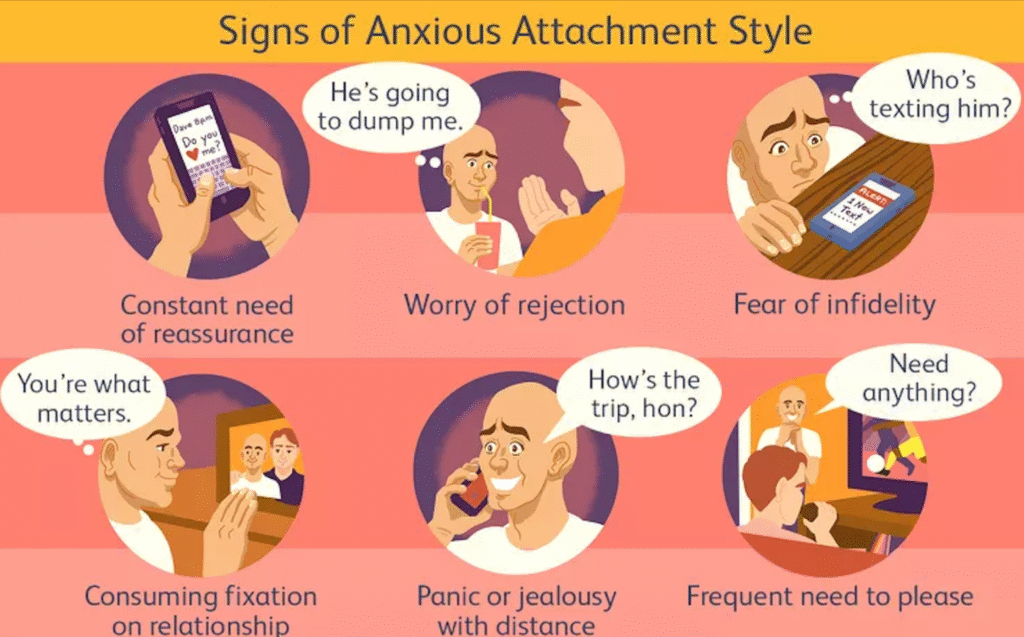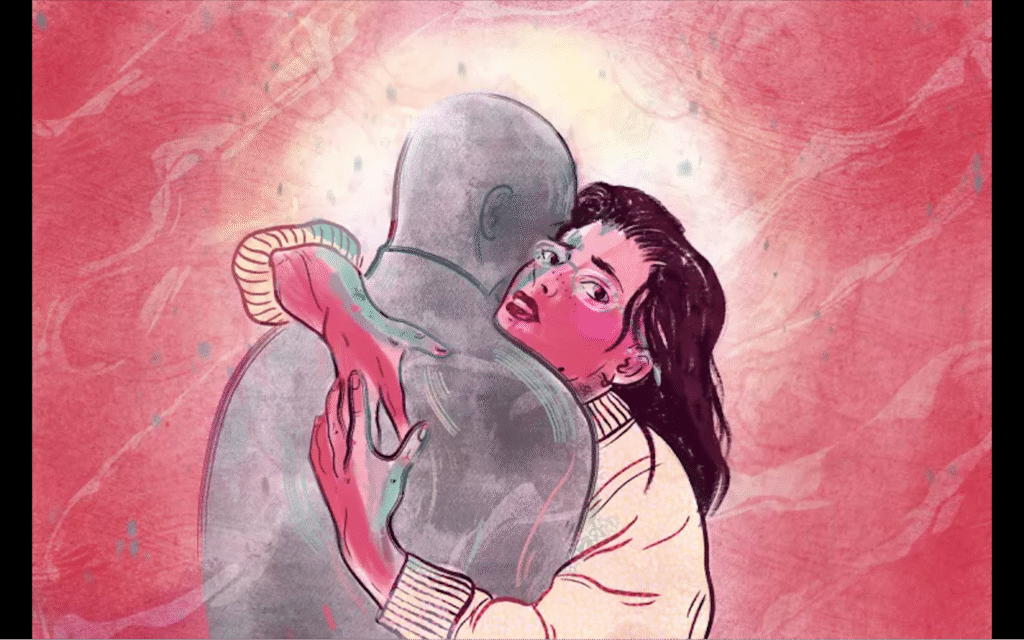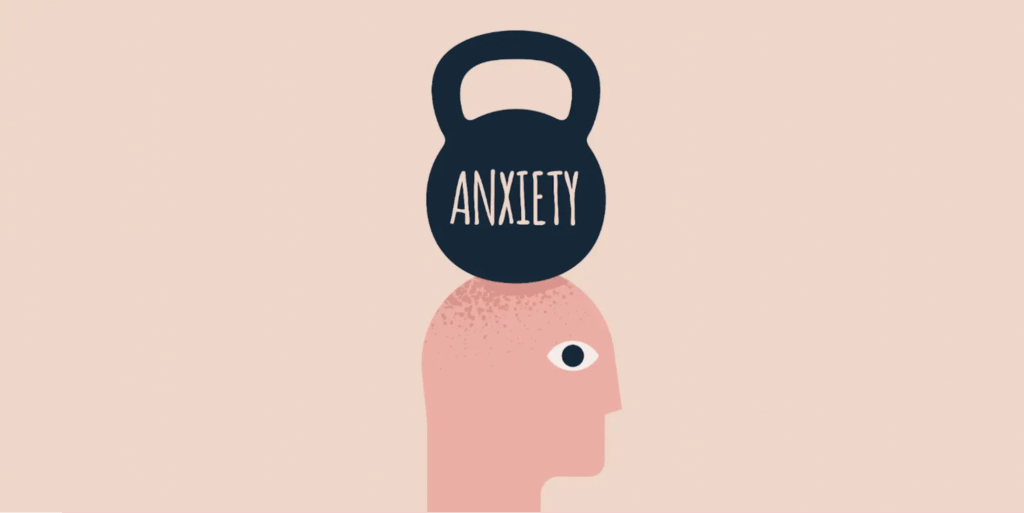You just sent a text, and now you’re staring at your phone, heart racing, wondering why they haven’t replied. Minutes feel like hours. Your brain spins stories: Did I say something wrong? Are they upset? Are they pulling away? You feel a wave of panic rise then, just as suddenly, you want to shut off and disappear.
This is the emotional pattern of anxious attachment. It isn’t drama or overreaction. It’s a response wired into your nervous system through lived experiences. And unless addressed, it can leave you in a cycle of chasing, panicking, and emotionally shutting down.
Understanding Attachment Styles
Attachment theory, pioneered by psychologist John Bowlby, suggests that our early experiences with caregivers shape how we connect with others in adulthood. There are four primary attachment styles:
- Secure – Trusting, emotionally open, able to set healthy boundaries.
- Anxious – Emotionally hungry, needs constant reassurance, fears rejection.
- Avoidant – Emotionally distant, values independence, avoids closeness.
- Disorganized (Fearful-Avoidant) – A mix of anxious and avoidant traits, often due to trauma.
While all attachment styles influence how we relate, today we’re focusing on what is anxious attachment and why it leads to emotional extremes, like chasing someone one moment and pulling away the next.
What is Anxious Attachment?
If you’ve ever wondered what anxious attachment is, it refers to a form of insecure attachment that develops when early caregivers were inconsistent in their responsiveness. Love may have felt uncertain—there sometimes, and gone the next.
In adulthood, this leads to a fear of abandonment, hyper-sensitivity to rejection, and a tendency to overthink or overreact in relationships.
Signs of Anxious Attachment in Adults:
- Constantly seeking reassurance
- Feeling easily triggered by emotional distance
- Doubting the stability of your relationships
- Overanalyzing texts, tone, and pauses

The Chase: Seeking Safety Through Closeness
The urge to “chase” is a hallmark of the anxious attachment style. When there is silence or emotional distance, you might feel compelled to reach out, explain yourself, or try to pull your partner back in.
But this pursuit often activates an uncomfortable dynamic.
In many relationships, especially in anxious avoidant attachment style pairings, one partner craves closeness while the other fears it. The anxious partner pursues, while the avoidant partner distances themselves. This creates what therapists call a push-pull relationship.
Push-Pull Relationship Dynamics
In a push-pull relationship, both people are caught in a cycle that neither understands. The more one person reaches out, the more the other pulls back. This is especially common when an anxious avoidant dynamic is at play.
For the anxiously attached partner, this is deeply confusing. They’re trying to connect, not push away, but the avoidant’s response tells them they’re too much.
The Panic That Follows
Once emotional distance is perceived, anxiety kicks in. You may start obsessing over what you did wrong, fear you’re about to be abandoned, or go into emotional overdrive.
These physiological responses are not exaggerated, they are your nervous system reacting to what feels like a threat. For someone with an anxious attachment style, even small relational hiccups can feel devastating.
Withdrawing to Protect Yourself
Surprisingly, those with anxious patterns don’t always chase. After a certain point, especially when they feel their needs aren’t met or they’re “too much,” they withdraw.
Pulling away can feel like the only option when you’re ashamed of your emotions, exhausted from trying, or fearful of being rejected again. If you’ve experienced this, know you’re not alone in dealing with anxious attachment.
Therapy and Healing: There Is a Way Forward
The cycle doesn’t have to repeat. With insight and support, many people move from anxious patterns into healthier relationships.
Anxious attachment style therapy focuses on:
- Building emotional regulation skills
- Learning to meet your own needs without relying entirely on a partner
- Identifying your triggers and soothing them
- Practicing secure, direct communication
Therapies like Emotionally Focused Therapy (EFT) and Attachment-Based Therapy are highly effective for working through patterns of insecure attachment and building a stable sense of self-worth.
Frequently Asked Questions About Anxious Attachment
Do anxiously attached people withdraw?
Yes, especially when they feel emotionally overwhelmed or ashamed of their reactions. Withdrawal acts as a form of self-protection, not disinterest.
Do anxious attachments push people away?
Often, yes. Despite wanting closeness, their fear-based behaviors may overwhelm or confuse partners, unintentionally creating emotional distance.
Why do anxious people chase avoidants?
Avoidants often trigger the anxious person’s fear of abandonment. Their distancing behaviors activate the anxious partner’s urge to pursue love and reassurance, leading to a painful push-pull cycle.
Final Thought
You are not too much. You are not broken. Your attachment style is a response to your past, not a definition of your worth. With awareness, compassion, and the right support, you can break free from the push-pull relationship dynamics and move toward connection that feels calm, mutual, and secure.



